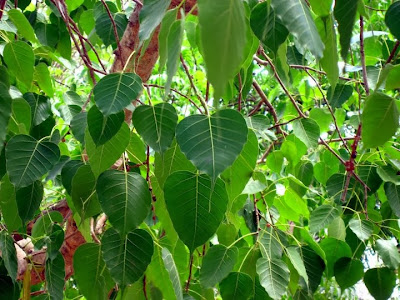.jpg) |
| The Healing Herb of India: Carica papaya |
Carica papaya L. (Caricaceae family)
is cultivated throughout India, in many places as commercial crop. It is a small,
soft wooded, plant with straight trunk without branches that grows to a height up
to 8m. The leaves are deeply lobed with long, hollow petioles. Inflorescence
bears unisexual white or yellowish white flowers. It bears green fruits when
immature, which turn yellow when ripe. The hollow of fruit contains bright
orange flesh with small black seeds clustered in the center.
Papaya fruit is a rich source of antioxidant
nutrients such as carotenes, vitamin C and flavonoids, the B vitamins, folate,
pantothenic acid, minerals (potassium, magnesium and fiber). Latex found in the
unripe fruit contains enzymes like papain, peptides and chymopapain A and B. In this post, learn about various health
benefits and remedies with papaya:
.jpg) |
| Carica papaya |
Skin and Hair
Topical application of papaya fruit pulp is found beneficial in removing tanning, sunburn and age spots. Owing to the high levels of alpha hydroxy acids and papain enzyme, regular application of fruit pulp helps reduce wrinkles and fine lines from the skin. A face pack prepared from the fruit pulp also helps to get rid of pimples and ugly scars. Applying 1 tsp of papaya latex (diluted with water) on the scalp twice a week helps to eradicate head lice completely. Applying latex of the plant on the affected area thrice daily cures ring worms.
Stomach Related Ailments
For constipation, consuming a bowl of papaya
fruit would prove to be beneficial. Colon infection can also be treated by
regularly having papaya fruit juice. For improving appetite, take 2-3 drops of papaya
latex with water in the morning. Eating fruit pulp with a pinch black salt and
black pepper, controls windiness in stomach. Chewing or swallowing the seeds of
papaya with honey, after meals helps expel worms. Administering 30 drops of raw
papaya latex diluted with 1 tsp of water and taken with a little milk,
cures dysentery.
Weight Loss
Papaya is a low calorie fruit with high fiber content. Eating a bowl of ripe papaya as mid time snacks helps to feel full for a longer period of time. This keeps you satisfied, curbs the hunger cravings, and keeps you from overeating. The digestive enzymes papain and chymonpapain found in papaya are known to cleanse your digestive tract, further supporting fat loss.
Fever
Papaya can treat fevers too. Drinking 1 tsp juice
of young leaves of papaya in a cup of water is an effective treatment for fever.
This also treats vomiting, headache and
inflammation accompanying fever. One should take this medication thrice daily
for 3-5 days for complete cure.
Jaundice
Administering about 30 drops of the latex of
the unripe fruit in half a cup of water and added sugar controls liver
dysfunction causing jaundice. Take this formulation thrice daily for 5 days;
reduce the dose to twice a day for next one week.
Cardiovascular Diseases
Papaya is a rich source of vitamins and soluble
dietary fibers. Studies have shown that eating papaya fruit daily works to lower
high cholesterol levels and provides protection against heart related ailments.


.jpg)


_leaves_at_Narendrapur_W_IMG_4101.jpg)
.jpg)







.jpg)

.jpg)
.jpg)
.jpg)
.jpg)



